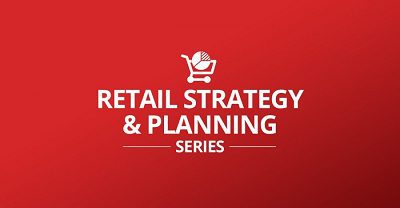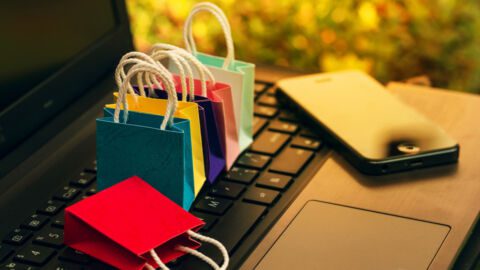The 13 webinars in the 2019 Retail Strategy & Planning (RSP) series, now available on-demand, illustrate how today’s shoppers are sizing up the brands and retailers they buy from. Providing key insights on how retailers can turn one-time consumers into full-time shoppers, the sessions feature fresh survey data on topics including holiday trends, location intelligence, omnichannel shopping and premium loyalty programs, along with real-world examples from companies including CVS, Keurig, Grove Collaborative, Bonobos, lululemon, Peloton and Standard Dose.
Following are some of the key quotes and data points from this year’s slate of webinars:
Advertisement
GEARING UP FOR HOLIDAY 2019
Holiday 2019 Success Will Require Creating A Sense Of Urgency
Thanksgiving will be one week later in 2019 than in 2018, resulting in six fewer days of peak holiday season shopping. The late start will require retailers to kickstart the season with “early moments,” such as collaborations with brands and influencers and exclusive deals available through social media to make the most of the smaller window, according to Salesforce. U.S. retail sales are still expected to rise 13% to $136 billion between Nov. 1 and Dec. 31 thanks to the urgency created by these initiatives, which will cause spending to spread out through the whole holiday season.
Sleigh Your Goals This Holiday Season With Predictions From 500 Million Shoppers
Sponsor: Salesforce
Shoppers Don’t Have Time To Waste On E-Commerce Checkout
Holiday cart abandonment rates hit nearly 70% last year, in part due to the checkout process being too long, too complicated and involving too many fields. This problem can be exacerbated on mobile screens, which accounted for 43% of Black Friday orders in 2018. A streamlined, seamless process is key for retailers looking to improve their holiday performance — for instance, address verification technology can reduce address entry time by up to 78%, according to Loqate.
Creating A Seamless Purchase And Delivery Experience In Time For The Holidays
Sponsor: Loqate
BOOSTING CX WITH IMPROVED UNDERSTANDING OF CONSUMERS
The 5 New Rules For Creating An Email Welcome Series
As many as 83% of consumers are more likely to do business with a company if it offers personalized experiences, according to research from Epsilon. This makes it all the more important for retailers to personalize their “welcome series” of emails based on shopper data and intent. Greg Zakowicz, Senior Commerce Marketing Analyst at Oracle NetSuite, laid out five new goals retailers should employ when they prepare to launch a welcome series, including:
- Understanding customer intent;
- Building consumer confidence;
- Using data to cater to intent;
- Overcoming obstacles to conversion; and
- Converting the subscriber.
Creating A Data-Driven Welcome Series That Generates Revenue
Sponsor: Oracle NetSuite
Break Through The Barriers To Location-Based Shopper Tracking
Retailers are largely in agreement that location intelligence matters — 78% recognize that they need to be where the customers are, according to Retail Systems Research (RSR). But organizational inhibitors are still preventing them from achieving that goal: 59% of retailers say that overarching concerns about consumer privacy prevent them from even considering location intelligence applications.
When it comes down to it, permission-based tracking is a major component of location intelligence, with 85% of retail “winners” citing it as “very important,” compared to just 66% of remaining retailers that call it “somewhat important.”
Location Intelligence: Retailers Leveraging The Science Of Where
Sponsor: Esri
How Data Helps Retailers Capitalize On Top Industry Trends
Millennials and Gen Z combined have nearly $250 billion in spending power. With this much financial sway, retailers simply cannot afford to miss out on the top trends these shoppers are driving, such as the emergence of direct-to-consumer (DTC) brands or the growth of “Retail as a service” platforms.
More than ever, retailers must rely on shopper data to capitalize on these trends and cater to new expectations; 91% of consumers say they’re more likely to shop with brands that recognize and remember them, according to Accenture.
5 Ways To Use Data And Insights To Adapt To New Retail Realities
Sponsor: Oracle NetSuite
Strong Personalization Drives Profit At The Expense Of Retailers Without It
Personalization is only growing in importance, and $800 billion in sales are expected to shift to online retailers that use personalization at the expense of those that don’t. Relevance is a revenue driver, as seen in several case studies presented by RedPoint Global:
- Xanterra unified its personalization data to reduce its number of messages by 40% with fewer but more relevant emails. The combination of less customer fatigue and better messaging boosted revenue by 91%.
- Keurig reduced friction in its direct-to-consumer business across its hundreds of coffee flavors and brands using machine learning. This personalization resulted in an 80% revenue lift.
Continuous Intelligence For Personalized Customer Engagement Strategies
Sponsor: RedPoint Global
MERCHANDISING, MARKETING AND LOYALTY IN AN OMNICHANNEL WORLD
Omnichannel Can Simultaneously Boost Revenue And Cut Costs
Omnichannel doesn’t create better retailers, it creates better customers: shoppers who use at least two channels are 2X as profitable as those who use only one. Buy online, pick up in-store (BOPIS) offerings are particular powerful tools, as 75% of BOPIS customers are likely to make an in-store purchase as well, and 49% make an unplanned purchase during the pickup trip. The bottom line benefits as well — improved customer journeys increase revenue by 10% to 15% while reducing the cost to serve by 15% to 20%.
Good, Bad, Ugly: Pivot To Customer Optimizes The Omnichannel CX
Sponsor: Oracle
The Omnichannel Journey Frequently Starts Online And Ends In-Store
Most retailers are familiar with showrooming, which 57% of shoppers practice, but many don’t realize that 74% “webroom” — they look at products online before visiting a store to make their purchase, according to a survey by JRNI. These habits can be encouraged by retailers that meet the top three desires expressed by consumers who shop in-store:
- Access to well-trained staff;
- Spending less time waiting in line; and
- Experiencing products in better ways.
Consumer Survey Results: Understanding The Omnichannel Shopping Experience
Sponsor: JRNI
For The Best Results, Blend Retailers’ Own ‘Art’ With AI-Driven ‘Science’
“Think of the decisions being made with art, science or both. The art decision is always best made on a smaller amount of data with a less frequent decision. On the other hand, if you look at science, the types of techniques that have been done by machine learning, AI and deep intelligence methodologies, they work exceptionally at things that have lots of data volume and very frequent decisions that need to be made. If you apply art where art is needed and science where science is good at it, you can achieve a much better blend and much better results in total.”
— Kevin Stadler, President and CEO, 4R Systems
Getting The Most Out Of Machine Learning And AI In A Merchant Driven Retail Organization
Sponsor: 4R Systems
The Value (And Promise) Of Premium Loyalty Programs
According to the Clarus Commerce Premium Loyalty Data Study, 58% of consumers currently belong to a premium loyalty program, and 65% plan to join one in the next 12 months. Among those that don’t currently belong to such a program, 71% would join if their favorite retailer offered one.
2019 Premium Loyalty Data Study: Will Your Customers Pay For a Loyalty Program?
Sponsor: Clarus Commerce
The Vital Importance Of Amazon Advertising
55% of consumers start their product searches on Amazon, which features more than two million active sellers. A holistic approach includes three elements:
• Get Live: Add your products to Amazon’s catalog with accurate and complete content;
• Get Found: Combine organic product content optimization with advanced advertising strategies to ensure shoppers find your products; and
• Get The Sale: Apply best practices to dynamic content, reviews and promotions — all to drive increased conversions.
The Two Pillars of Amazon Success: Building Visibility Through Better Content and Advanced Advertising
Sponsor: ChannelAdvisor
STREAMLINING THE LAST MILE
Numbers Explain The Growth Of BOPIS
Total retail is growing 4.1% year-over-year, but e-Commerce is growing 14.1% year-over-year — and the cost of fulfilling an e-Commerce order is 3X to 5X compared to a brick-and-mortar purchase.
Moving Beyond BOPIS Basics By Expanding Fulfillment Options
Sponsor: Package Concierge
Why Last-Mile Has Become A Customer Experience Battleground
“Supply chain professionals: your job has changed. As e-Commerce has grown, Amazon has trained customers to expect fast, free and flexible delivery. And the burden of managing this complexity, of enabling these delivery options and creating this customer experience falls to you. So congratulations, you’re now in the customer experience business.”
— Michael Miller, Chief Product & Strategy Officer, Convey
New Rules For Retail Supply Chain Success: Align Last Mile And Top-Notch Customer Service
Sponsor: Convey















